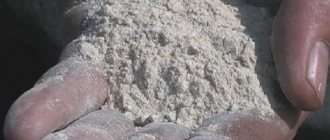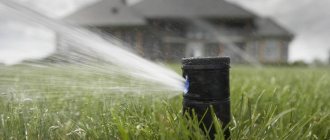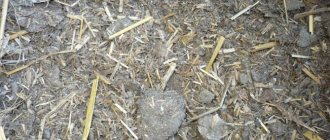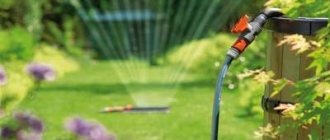Luxurious lawn grass is the dream of every summer resident. But to achieve such a result, you need to make some efforts. Many people mistakenly believe that a green lawn near their home does not require special care. However, you need to know that in order to maintain bright and lush vegetation, you need to regularly carry out a number of activities, in particular, fertilizing the lawn in the fall. Thanks to such fertilizing, the decorative element of the garden plot will always please the eye.
Lawn care specifics
Without special fertilizers, even grass, especially lawn grass, will not look as desired. Experts emphasize to beginners that lawn grass needs to be cut regularly. At the same time, each plant loses most of the already accumulated nutrients, so their reserves in the soil should be regularly replenished. Otherwise, the soil will gradually deplete, and the condition of your lawn will leave much to be desired: the grass cover will become thinner and noticeably thinner. In this state, the vegetation is exposed to various diseases and attacks by pests, and is suppressed by voracious and tenacious weeds.
Experts recommend carrying out the first fertilizing in early spring, when young blades of grass are just beginning to “wake up”.
Practitioners advise fertilizing lawn grass after each mowing. In this case, it is important not to “overfeed” the green lawn, because an excess of nutrients in the soil is no less dangerous than their deficiency. Therefore, when using any fertilizer, it is very important to adhere to the dosages that the manufacturer indicates on the packaging.
The Agro-Center online store has been selling various agricultural products, including fertilizers for lawn grass, for many years. Our product is particularly popular with customers, because we sell top quality products from well-known and reliable manufacturers.
Procedure technology
Lawn fertilizers are applied in several ways:
- Manual. This is the most popular method, in which the fertilizer is distributed evenly, both along and across the green cover. It is also used when applying pure organic compounds, in particular manure.
- Using a watering can or sprayer . Thanks to the devices used, it is possible to spray liquid fertilizer, previously diluted with water in accordance with the instructions. When working with agrochemicals, it is recommended to use rubber gloves, protective clothing, and wash your hands with soap when finished.
- Mechanical . To fertilize the lawn, a special seeder is used, which must be slowly moved across the lawn. With this approach, the nutrient mixture is distributed evenly.
Fertilizer mixtures have a positive effect on lawn grass, increasing its decorative qualities and resistance to adverse environmental factors. The main thing is to use agrochemicals according to the manufacturer’s instructions, which clearly indicate both application rates and methods of application.
No matter how much you would like to take a break from gardening chores in the fall, there are still a number of things that it is advisable to do without postponing until spring. One of these activities is fertilizing the lawn.
The lush green grass of a lawn is a universal element of landscape design, capable of decorating a landscape, highlighting the beauty of ornamental plants, and becoming an excellent platform for a recreation area. Therefore, if you want your lawn to be healthy, so that it does not have bald spots and other imperfections that spoil its appearance, pay attention to it in the pre-winter period.
One of the main activities that maintain the beauty of the grass is the application of fertilizers. But if in early spring and summer plants need increased portions of nitrogen, as well as a whole complex of microelements, then in the fall the composition of fertilizers changes.
Nitrogen for the lawn
Nitrogen is an essential macronutrient of any vegetation. It stimulates the growth of crops, gives the green mass a bright, rich color, and strengthens the roots.
Nitrogen-containing fertilizers are the most aggressive, so they must be used carefully and carefully, observing the dosage.
It is not recommended to use nitrogen fertilizers for lawn grass in the fall. This is due to the fact that the active substance helps to activate the growth of greenery, which is extremely undesirable before the onset of cold weather.
Experts recommend using slow-acting fertilizers as an autumn nitrogen-containing fertilizer. Their peculiarity is that they are absorbed by the root system much longer than ordinary ones, which is due to two main factors:
- Some contain additives that are poorly soluble in water;
- Encapsulated fertilizers are covered with a special film.
Types of superphosphate
Superphosphate is the general name for a group of phosphate fertilizers. Its main component is phosphorus. Depending on the composition of the fertilizer, its amount varies from 20 to 50%.
Based on solubility, they are divided into 3 groups:
- Water-soluble - superphosphate, double superphosphate and complex - ammophoska, diammofoska;
- Insoluble in water, but soluble in citric acid - precipitate, waste slag;
- Hardly soluble – phosphorus and bone meal.
Almost all phosphorus fertilizers are obtained from natural materials and waste from the metallurgical industry (precipitate, waste slag). Phosphorus is practically never found in free form in nature; it is mainly found in the form of oxides in organic substances and minerals.
The famous academician A.E. Fersman described phosphorus as “a biogenic mechanism of life and thought.” After all, phosphorus atoms, along with other important components, are constantly present in the global cycle of substances in nature.
Phosphorus fertilizing
Phosphorus deficiency negatively affects the development of plant roots, which is extremely undesirable for lawn grass. A sufficient concentration of this macronutrient stimulates the active growth of lateral shoots, which makes the grass cover thick and lush.
Another feature of phosphorus-containing fertilizers: it is difficult to “overfeed” the soil with them - the crop takes them exactly as much as it needs.
Another positive quality of phosphorus is that it has the ability to remain in the soil layer for a long time. Therefore, if you correctly apply such fertilizing once, the result will be noticeable for 2-3 years.
Additionally, do not forget that phosphorus in combination with potassium significantly increases the resistance of vegetation to adverse weather conditions.
This means that if there is a sufficient amount of this microelement in the soil, then the chances that your lawn will successfully survive the winter increase significantly.
Using superphosphate in the garden in the fall. Where to apply, dosage
Superphosphate is a popular fertilizer among many summer residents and gardeners. Its role is difficult to overestimate, since it is used for many agricultural crops and on all types of soils. Phosphorus is essential not only for plants. After all, by eating vegetables or fruits, a person also receives this microelement. It is extremely necessary, like calcium, for the normal condition of bones, tooth enamel, serves as protection against stress, the development of osteoporosis, etc. However, having bought a pack of fertilizer, many simply pour it into the hole without measure, which is fundamentally wrong. How to use it, what should you consider when working with it?
Potassium
In order for your green lawn to please you next year, you need to take care of applying potassium-containing fertilizers before the onset of winter.
Moreover, this fertilizing should be used not only in the fall, but during the entire growing season.
The peculiarity of potassium is the following: it not only strengthens the grass, but also provides its immunity to various diseases and dangerous pests. It is important that this microelement significantly strengthens the root system of the plant, which ensures its resistance to winter cold.
It is important to consider that potash fertilizers should be applied at least once a year due to the fact that this substance is quickly washed out of the soil. This is especially important after winter, when meltwater actively affects the soil.
A lack of potassium is easily noticed by the dull color of the vegetation; often the tips of the grass turn yellow and curl. To be more certain, it is advisable to conduct a chemical analysis of the soil, because the signs of potassium deficiency are similar to nitrogen deficiency.
Superphosphate dosage for dilution
Most likely, when you buy a package of fertilizer, first of all you look at the reverse side of the application and dosage. And you see that the amount of fertilizer is written there in grams per square meter. But it is not always possible to weigh out a certain amount of fertilizer, and scales may not be at hand.
Usually, when diluting, they focus on the number of tablespoons. So how much superphosphate does 1 tablespoon contain? 1 tbsp. l. equals 25 g of fertilizer, 2 tbsp. l. = 40 g, etc.
Feeding in autumn
With the arrival of autumn, it is necessary to ensure that the lawn meets the first winter cold with dignity. Some owners, to be more confident that the green lawn will retain its previous appearance, use mulching. You can use different materials as mulch: moss, fallen autumn leaves, sawdust, compost. Additionally, over the winter, such natural materials will saturate the soil with useful micro- and macroelements, which will be very significant for the grass cover, especially in the spring.
Beginning “lawn growers” ask themselves the question: “What exactly and how can you fertilize your lawn in the fall?” Their experienced colleagues recommend for this purpose the use of complex mineral fertilizers, which contain several of the most important microelements for vegetation.
Pay attention to the range of products in the Agro-Center online store. Here you can find high-quality fertilizer not only for lawns, but also for other areas: garden, vegetable garden. Additionally, our competent consultants will help you make the right choice and, if necessary, explain the dosage of the drug.
As a rule, autumn fertilizers for the lawn include elements such as potassium and phosphorus. As already mentioned, the nitrogen content for autumn feeding should be minimal - the substance activates the growth of green mass.
Additionally, one-component phosphorus fertilizer can be applied just before frost - the substance will strengthen the root system, which will allow the grass to endure winter cold snaps painlessly.
It is also equally important that a sufficient amount of potassium-phosphorus macroelements will stimulate the spring formation of young shoots. This will further allow the formation of a denser layer of turf.
Gardeners recommend using bone meal, superphosphate, or specially designed complex fertilizers as autumn fertilizers for the lawn. For example, the Agro-Center online store sells Agricola winter fertilizer, designed specifically for lawns. After using it, your lawn will have a color characteristic of the grass type. In our store you can also purchase various lawn grass seeds for planting.
Aeration
This is another necessary procedure included in lawn care in the fall . It will supply the roots with oxygen, help the growth of rhizomes and the regrowth of grass in the spring. It is not easy to cope with large areas without the help of equipment, but there is a large selection of aerators in stores. There are mechanical ones that you have to roll on the lawn manually, and there are those with an electric and gasoline engine.
In a small area, you can do it with a pitchfork. Every 30 cm they are stuck into the ground to a depth of 10 cm and the soil is slightly raised.
There are also special pads with spikes that are placed on the soles of shoes. Convenient, but you can’t get around a large lawn with them.
There are also aerators with hollow teeth, leaving round holes in the ground, which after a few days are covered with a peat-sand mixture. Very effective, but somewhat troublesome. Mulch from a mixture of sand, peat and humus can simply be scattered in a thin layer after aeration
- After this procedure, the lawn should be left alone until fertilizing, and you should walk on it as little as possible. In the fall, you generally need to walk on the lawn less often, especially in wet weather, so that the soil does not become compacted. You should not do this even after snow falls, until its thickness reaches 30 cm.
- And it’s even more unacceptable to build a skating rink on it. Roots need air even in winter. If during the thaw there is an ice crust on the lawn, break it up with a rake.
Tips for fertilizing
The main problem with decorative covers is prolonged drought or heavy rains. If the lawn can cope with the second problem on its own, then the first one needs additional help. This is especially true for the period when applying fertilizers already becomes necessary.
In this case, drip irrigation should be used. Only in this case will all the elements contained in the fertilizer be able to penetrate into the root system of the plant as quickly and completely as possible.
For greater efficiency, drainage or so-called aeration is done for this: they pierce the soil with a pitchfork or a special tool so that nutrients penetrate into it as quickly as possible and are distributed in the layers of the earth.
Simple superphosphate
Phosphorus in this fertilizer is 26%. Chemical formula: Ca(H2PO4)2 x H2O and CaSO4. There are two types: powder and granular. The first option is cheaper, but it has rather low efficiency. You won’t find it in stores now; granular versions are sold everywhere. Therefore, we will give exactly its characteristics.
The advantages of using simple superphosphate: in addition to phosphorus, it contains nitrogen (6%), calcium (17%), sulfur (10%) and magnesium (0.5%). Perfectly absorbed by plants.
Disadvantages of using simple superphosphate: 40% of the fertilizer consists of gypsum, which is absolutely useless for plants. That is, when buying a package of fertilizer, you are actually giving away half of its cost for an unnecessary substance.
When to apply simple superphosphate: in the fall, before digging.
Features of using simple superphosphate: cannot be mixed with urea; ammonium, sodium and calcium nitrate; potassium carbonate, lime, dolomite, chalk.
Where can superphosphate be used?
As we found out, superphosphate has no significant disadvantages, and double phosphate has none at all. However, it cannot be used everywhere. This fertilizer can be safely used only on alkaline and neutral soils.
Superphosphate is not suitable for acidic soils - phosphorus oxide, which is part of the fertilizer, reacts in an acidic environment, resulting in the formation of iron and aluminum phosphates. Plants cannot absorb these substances. Therefore, before using superphosphate, the soil must be deoxidized: sprinkle 500 g of slaked lime per 1 m2 on the surface (on highly acidic soil), and dig the area with the bayonet of a shovel. And only a month after this you can add superphosphate.
When and how much to apply superphosphate
Adding superphosphate in the fall for digging
This is a traditional option, since phosphorus is absorbed by plants for a very long time - in 2-3 years they use only 40% of the fertilizer.
Application rate: double superphosphate – 1.5–2 tbsp. spoons (20–30 g) per 1 m2, plain 3–4 tbsp. spoons (40–60 g) per 1 m2. This is for normal soils. For the malnourished and very poor, the dose is doubled.
Spring application of superphosphate into holes or rows
You can apply superphosphate in the spring, in the rows immediately before sowing seeds or in the holes before planting seedlings. This is a more economical option; less fertilizer is consumed, but the plants will begin to absorb it later than when applied in the fall.
Application rate: double superphosphate - 1 teaspoon (5 g) per hole or per 1 linear meter of row, simple - 2 teaspoons per hole or 1 linear meter of row.
By the way, it is very useful to add superphosphate to the holes when planting potatoes - it will not only feed the plants, but also rid the garden of wireworms.
Application of superphosphate during flowering of plants
Phosphorus is known to be responsible for abundant flowering, so it is useful to feed plants with it at this time. In this case, use liquid fertilizer. First, prepare a mother solution: 20 tbsp. spoons (300 g) of double superphosphate are poured into 3 liters of hot water (the fertilizer will not dissolve in cold water) and stir periodically until the granules are completely dissolved. Then the concentrate is shaken and diluted at the rate of 150 ml per 10 liters of water. It is also useful to add 20 ml of any liquid vermicompost and a half-liter jar of wood ash.
Water the plants at the root at the rate of 1 liter per bush or per 1 linear meter of row.
Double superphosphate
This version contains 40–50% phosphorus superphosphate. Chemical formula: Ca(H2PO4)2 x H2O.
The advantages of double superphosphate: it contains twice as much phosphorus as simple superphosphate, which means there is much less unnecessary ballast. Double superphosphate costs more than usual, but not much. And you need to apply it twice as much. As a result, in terms of per hundred square meters it turns out to be more profitable. And it’s easier to deliver it to the dacha, since instead of two packages of simple fertilizer you only need one double package.











